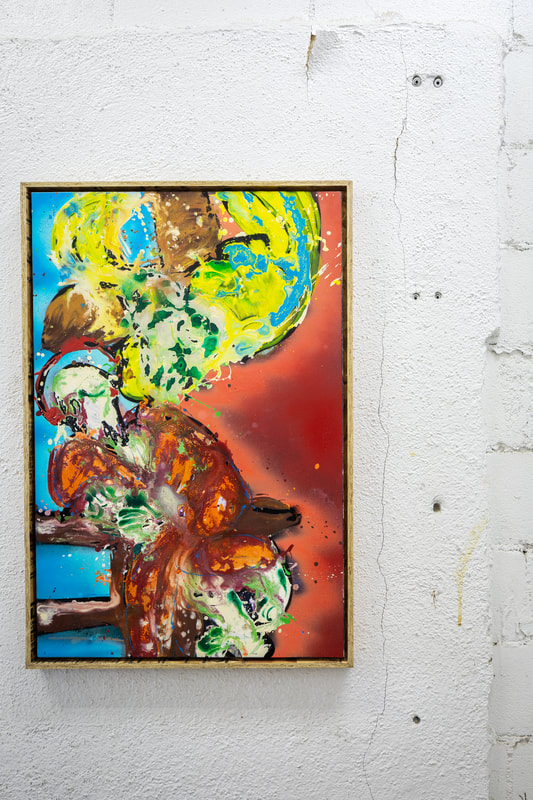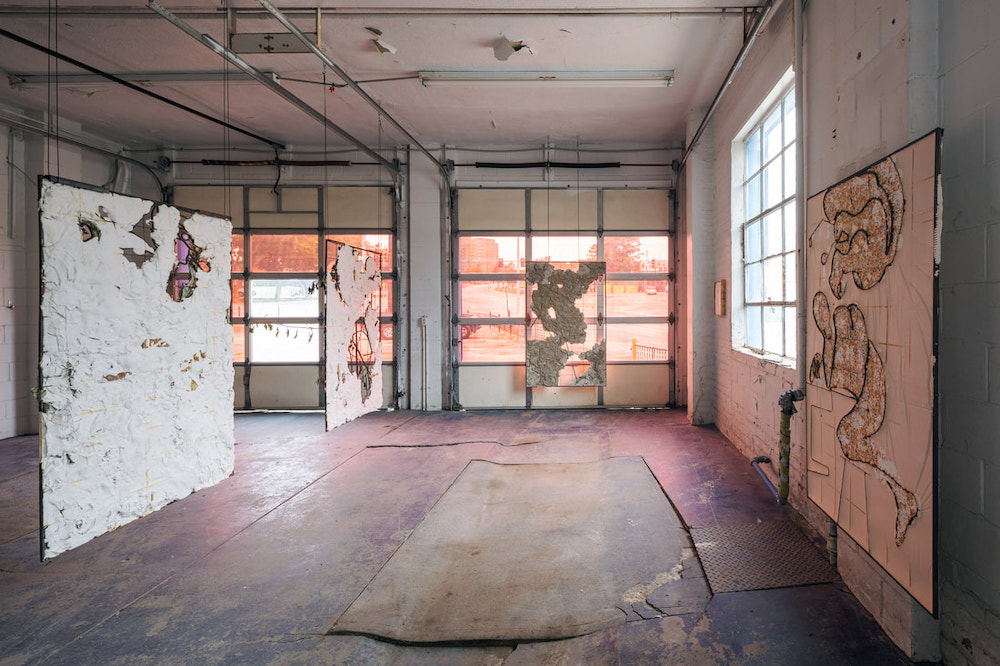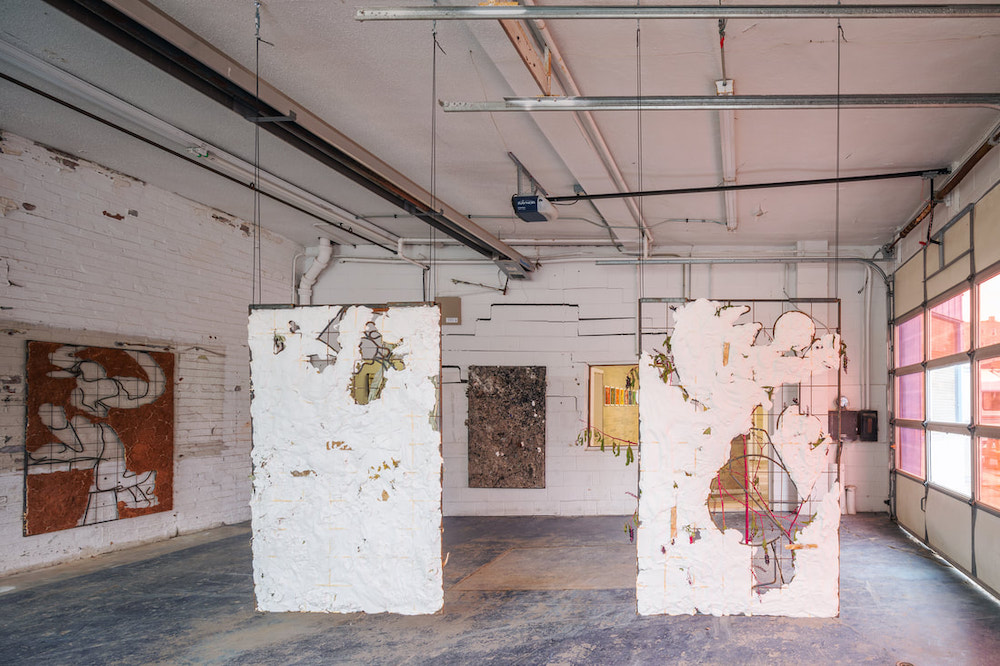“Precarious as obtained by entreaty or prayer,” Timo Fahler’s solo exhibition at Maple St. Construct, features 27 iterations of The Inspiration of Saint Matthew (1602), a painting by the canonical artist Caravaggio. After visiting Rome and viewing the painting in person last year, Fahler used the work’s composition as a point of departure, reproducing it in paintings, drawings, and plaster casts. The artist took the two figures in Caravaggio’s original and abstracted them, rendering them without a strong desire for pictorial correctness. The visual results are spontaneous, especially since Fahler employed standard action painting methods when creating his works.
This looseness with material is primarily seen in his plaster casts. Fahler assembled rebar frames that were then placed on flat surfaces and were poured over with plaster in an action similar to paintings and sculptures made by Lynda Benglis. The flow of the plaster was intentionally uncontrolled, which in many of the casts, only led to a partial covering of the rebar frames.
One major throughline in Fahler’s casts is recognizing the origins and history of the land we live on. Travelling across the United States, he selected plots of land that were charged with personal and historical memories. Primarily made in Oklahoma, Nebraska, and Iowa, he produced many of his casts on raw earth. Like an adhesive, the plaster picked up dirt and sand, flora and refuse and became part of the work, much like collaborative paintings by the artist duo G.T. Pellizzi and Ray Smith who poured paint onto canvases and laid them on land close to the United States-Mexico border. In an interview, Fahler said that this action was to “recognize the indigeneity of the land itself,” which was then incorporated into his artwork.

Timo Fahler, precarious as obtained by entreaty or prayer, “untitled,” 2020. ©Dan Schwalm / ©Maple St. Construct.
Unlike Pellizzi and Smith, whose works are abstract, Fahler’s casts personify the color and textures picked up by the plaster into the composition because they are figurative. Caravaggio’s figures become brown and beige, using earth and sand as their skin tones. One cast was sprinkled with corn kernels, which is significant because corn did not exist outside of the Americas prior to 1492. When not referring to the indigenous identity of the land, Fahler evokes his own memories and connects the casts to his upbringing, like in Cast #III. Created at the Keystone Dam in Oklahoma with his mother, the work recalls the time he spent there as a child with his family.

Timo Fahler, precarious as obtained by entreaty or prayer, “cast II,” 2020. ©Dan Schwalm / ©Maple St. Construct.
Since this exhibition is installed at a now-defunct auto body shop instead of Maple St. Construct’s standard exhibition space, the dilapidated, outdated interior is reflected in many of Fahler’s casts. One cast is positioned over a painted white wall, which can be seen through open areas in the composition. The effect being the wall becomes the skin for the figures. Another work cast on a brick road in Little Italy, a neighborhood in Omaha, reflects the brick walls within the auto shop, and more concretely connects with Caravaggio’s original painting through ethnic and national ties.
After marinating through the exhibition, I couldn’t help but think of a passage in Borderlands/La Frontera The New Mestiza, a book by Gloria Anzaldúa:
This land was Mexican once
was Indian always
and is.
And will be again.

Timo Fahler, precarious as obtained by entreaty or prayer, 2020. ©Dan Schwalm / ©Maple St. Construct.
Fahler’s works are physical representations of these lines, functioning as metaphors for recognition, representation, and also a pensive remembrance of personal and cultural memory.
All photos courtesy of Dan Schwalm.
Maple St. Construct
http://www.maplestconstruct.com/


